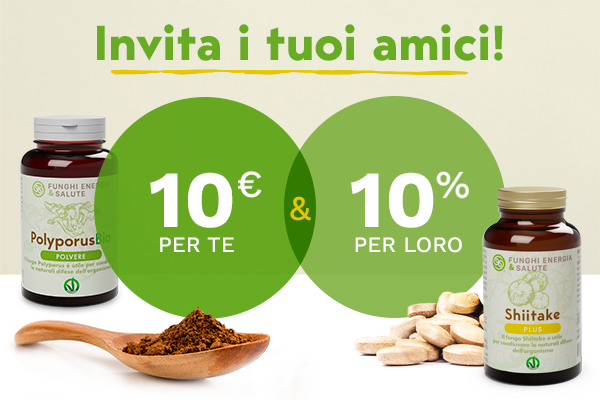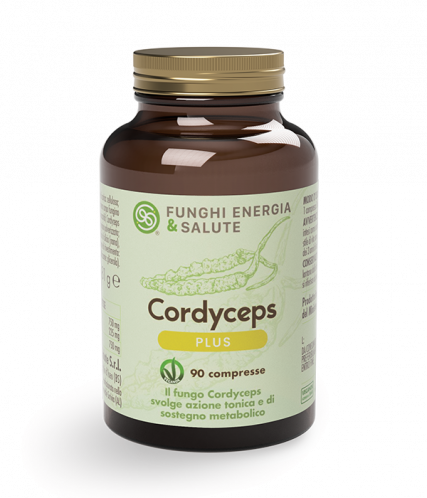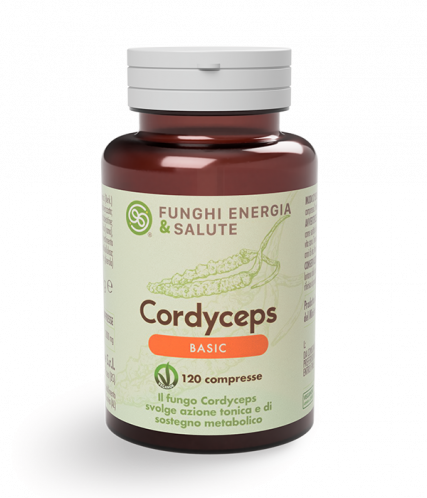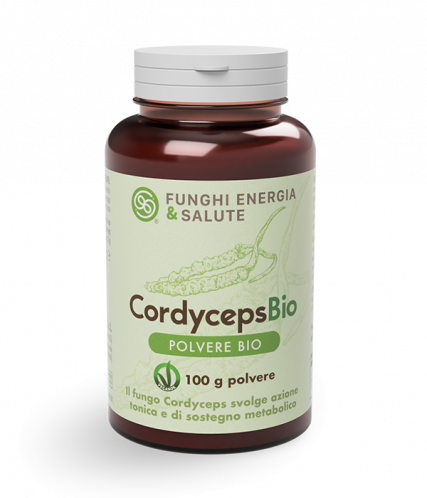Certified Natural products veganOK
030 9881073 Monday to Friday from 09:00 to 17:30
Toggle Nav 



Skip to Content
Language
EN
How can we help you?
Search
Subscribe to the Newsletter
to get immediately a discount code
on your first purchase
to get immediately a discount code
on your first purchase
Cordyceps
- Home
- Cordyceps
Cordyceps
In modern times
In recent times, the many studies conducted on Cordyceps (Cordyceps sinensis) in universities and research centres around the world have confirmed what Traditional Chinese Medicine had discovered over the centuries. Its efficacy in the treatment of liver disorders (Holliday et al., 2005; Dai et al., 2001), in cardiovascular problems (Yan et al., 2013; Chen et al., 1995), in strengthening physical and mental energy and the health of the male and female sexual apparatus (Huang et al., 2004; Huang et al., 2001; Zhu et al., 1998a and 1998b) has been recognized and demonstrated.
Ancient tradition
In Traditional Chinese Medicine (TCM), Cordyceps is highly appreciated and has been used for many centuries for various illnesses: respiratory diseases, kidney diseases, liver disorders, cardiovascular problems, low energy, reduced male and female sexuality.
Mycology
Originating in the Tibet region, Cordyceps grows at altitudes of up to five thousand meters.
For centuries, in these places, native populations have known about its beneficial effects on the body, especially for fighting fatigue. One of the strengths of Cordyceps is its ability to increase physical and mental energy, a feature that makes it highly appreciated by athletes, but also by people with an intense pace of life. It became well-known after the female Chinese athletes during the 1993 Chinese National Athletics Games in Beijing broke a remarkable series of records. Their amazing performances fuelled suspicions about a probable use of illicit substances, but the doping tests excluded such substances: in addition to high level training, the results obtained were attributed to Cordyceps.
This Medicinal Mushroom is authorized by all world sports federations, including the IOC (International Olympic Committee), because it is a safe and beneficial remedy for the health of athletes.
Chemical compounds
In Cordyceps there are:
- beta-glucans, which stimulate the immune system (Koh et al., 2002; Kuo et al., 2005 e 2007);
- cordycepin (deoxy-adenosine), a molecule similar to adenosine, which guarantees numerous beneficial effects. It is a powerful antibiotic and antiviral (Holliday et al., 2004). Cordyceps increases blood oxygenation and is an excellent adjuvant for all our organs (Yi et al., 2004);
- adenosine has a vasodilator effect, promoting blood circulation throughout the body (Berne, 1980; Toda et al., 1982; Pelleg e Porter, 1990). It reduces anxiety and is an effective anti-inflammatory agent (Akkari et al., 2006; Ukai et al., 1983);
- cytochrome P-450 (CYP450) is a group of liver enzymes. It represents the main detoxification mechanism of the body against external (such as alcohol, chemicals and drugs) and internal (body's waste products) agents. It is probably the most advanced purification system in nature, present in all mammals and fungi;
- antioxidant enzymes, in particular Superoxide Dismutase (SOD), which counteracts the harmful action of free radicals;
- the polysaccharides CS-F30 and CS-F10, which lower blood sugar (Kiho et al., 1999 e 2000; Zhao et al., 2002);
- terpenes are essential oils that give the Medicinal Mushroom a pleasant aroma. They perform a useful antibacterial action (Bernardshaw et al., 2005);
- cordycepic acid (D-mannitol), a urinary germicide.
Bibliography
- Akkari R, Burbiel JC, Hockemeyer J, Muller CE. (2006): “Recent progress in the development of adenosine receptor ligands as antiinflammatory drugs.” Current Topics in Medicinal Chemistry, 6(13): 1375-1399.
- Berne RM. (1980): “The role of Adenosine in the regulation of coronary blood flow.” Res. 47: 807-813.
- Chen DG. (1995): “Effects of Jinshuibao capsule on the quality of life of patients with heart failure.” J Admin Trad Chin Med, 5: 40-43.
- Dai G, BaoT, Xu C, Cooper R, Zhu JS. (2001) “CordyMax Cs-4 improves steady-state bioenergy status in mouse liver.” J Altern Complement Med, 7: 231-240 • Holliday J, Cleaver J. (2004): “On the Trail of the Wild Yak: Ancient Cordyceps in the Modern World.” Online posting. • Holliday J, Cleaver M, Wasser SP. (2005): “Cordyceps.” Encyclopedia of dietary supplements. Marcel Dekker: 1-13.
- Huang BM, Hsiao KY, Chuang PC, Wu MH, Pan HA, Tsai SJ. (2004): “Upregulation of Steroidogenic Enzymes and Ovarian 17β-Estradiol in Human Granulosa-Lutein Cells by Cordyceps sinensis Mycelium.” in Biol. May 70: 5, 1358-64.
- Huang BM, Hsu CC, Tsai SJ, Sheu CC, Leu SF. (2001): “Effects of Cordyceps sinensis on testosterone production in normal Mouse Leydig cells”, Life Science, 69, pp. 2593-2602.
- Kiho T, Ookubo K, Usui S, Ukai S, Hirano K. (1999): “Structural features and hypoglycemic activity of a polysaccharide (CS-F10) from the cultured mycelium of Cordyceps sinensis.” Biol Pharm Bull, 22: 966-970.
- Kiho T, Yamane A, Hui J, Usui S, Ukai S. (2000): “Hypoglycemic activity of a polysaccharide (CS-F30) from the cultural mycelium of Cordyceps sinensis and its effect on glucose metabolism in mouse liver.” Phytother Res, 14(8): 647-9.
- Koh JH, Yu KW, Suh HJ, Choi YM, Ahn TS. (2002): “Activation of macrophages and the intestinal immune system by an orally administered decoction from cultured mycelia of Cordyceps sinensis.” Bioscience, biotechnology, and biochemistry, 66(2): 407-411.
- Kuo CF, Chen CC, Luo YH, Huang RY, Chuang WJ, Sheu CC, Lin YS. (2005): “Cordyceps sinensis mycelium protects mice from group A streptococcal infection.” Journal of medical microbiology, 54(8): 795-802.
- Kuo CF, Chen CC, Lin CF, Jan MS, Huang RY, Luo YH, Chuang WJ, Sheu CC, Lin YS. (2007): “Abrogation of streptococcal pyrogenic exotoxin B- mediated suppression of phagocytosis in U937 cells by Cordyceps sinensis mycelium via production of cytokines.” Food Chem Toxicol, 45(2): 278-85.
- Pelleg A, Porter RS. (1990): "The pharmacology of adenosine." Pharmacotherapy: The Journal of Human Pharmacology and Drug Therapy, 10(3): 157-174.
- Toda N, Okunishi H, Taniyama K, Miyazaki M. (1982): “Response to adenine nucleotides and related compounds of isolated dog cerebral, coronary and mesenteric arteries.” Blood Vessels, 19: 226-236
- Yan XF, Zhang ZM, Yao HY, Guan Y, Zhu JP, Zhang LH, Jia YL, Wang RW. (2013): “Cardiovascular protection and antioxidant activity of the extracts from the mycelia of cordyceps sinensis act partially via adenosine receptors.” Phytotherapy Research, 27(11): pp. 1597-1604.
- Yang YZ, Wang LS, Deng HY, Ma YS, Wu HS. (1994): “Short term observation of treating chronic hepatitis B and post hepatic cirrhosis with Xin Gan Bao.” Res Chinese Materia Medica; (1): 19-20; 62
- Yi X, Xi-Zhen H, Jia-Shi Z. (2004): “Randomized double-blind placebo- controlled clinical trial and assessment of fermentation product of Cordyceps sinensis (Cs-4) in enhancing aerobic capacity and respiratory function of the healthy elderly volunteers.” Chinese Journal of Integrative Medicine, 10: 3 187-192.
- Zhao CH, Yin WT, Wang JY, Zhang Y, Yu H, Cooper R, Smidt C, Zhu JS. (2002): “CordyMaxTM Cs-4 Improves Glucose Metabolism and Increases Insulin Sensitivity in Normal Rats”, in The Journal of Alternative and Complementary Medicine, 8(3): 309-314.
- Zhu JS, Halpern GM, Jones K. (1998a): “The scientific rediscovery of an ancient Chinese herbal medicine: Cordyceps sinensis: part I.” J. Altern Complement Med, 4: 3 pp. 289-303.
- Zhu JS, Halpern GM, Jones K. (1998b): “The scientific rediscovery of a precious ancient Chinese herbal regimen: Cordyceps sinensis: part II.” J. Altern Complement Med, 4: 4 pp. 429-457.




